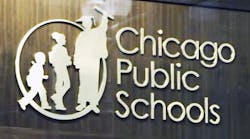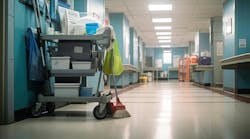In the annual budget scrum that takes place at schools and universities, maintenance staffs regularly find themselves on the losing end. So to maximize the effectiveness of their limited maintenance budgets and make sure facilities are clean, healthful and safe, education institutions must plan wisely.
“No building can perform optimally without adequate maintenance,” says the Northeast Collaborative for High Performance Schools Protocol, a guide to energy-efficient, environmentally friendly facilities.
“Training is critically important for maintenance staff to thoroughly understand how to maintain and operate the building systems. When staff turnover occurs, appropriate documentation must be on hand in order to train new team members.”
Having a maintenance plan is considered one of the prerequisites for a high-performance school, according to the protocol, which is based on the criteria of the Collaborative for High Performance Schools and adapted to fit the conditions in the Northeast region of the United States. It says a maintenance plan should include an inventory of all equipment in a school, including HVAC, plumbing, non-HVAC mechanical systems, lighting, building control systems, life and safety systems, interior finishes, roof systems and switchgear.
“Qualifying maintenance plans will include all regularly scheduled preventative maintenance tasks over the lifetime of the building system or equipment,” the protocol states. “These tasks include cleanings, calibrations, component replacements and general inspections.”
The protocol awards additional credit to schools that use a computerized maintenance management system (CMMS). CMMS enables schools to keep track of maintenance needs, schedule required work, and follow the status of a work order. The systems also enable schools to create a history of completed projects.
Another prerequisite in the high-performance protocol calls for schools to adopt the U.S. Environmental Protection Agency's “Tools for Schools” program or an equivalent program to ensure indoor health and safety. The “Tools for Schools” program “establishes responsibilities and clear communication channels so that indoor air problems can be prevented and problems can be quickly identified and solved.”
Building commissioning is another key element in maintenance management, according to the protocol. Commissioning, it says, should include documenting the design intent and operation protocols for all building systems; verifying system performance through well-documented testing and measurement; preparing comprehensive operation and maintenance manuals; providing appropriate training of building operations staff; and monitoring system performance on an ongoing basis.
NOTABLE
5 to 20
Percentage in savings schools can achieve by effectively managing, maintaining and operating school physical plants.
$8 billion
Amount U.S. schools spend each year on energy.
Source: School Operations and Maintenance: Best Practices For Controlling Energy Costs, U.S. Department of Energy
9.19
Percentage of expenditures allocated to maintenance and operations in the median U.S. school district, 2006-07.
Source: “36th Annual Maintenance & Operations Cost Study,” American School & University

